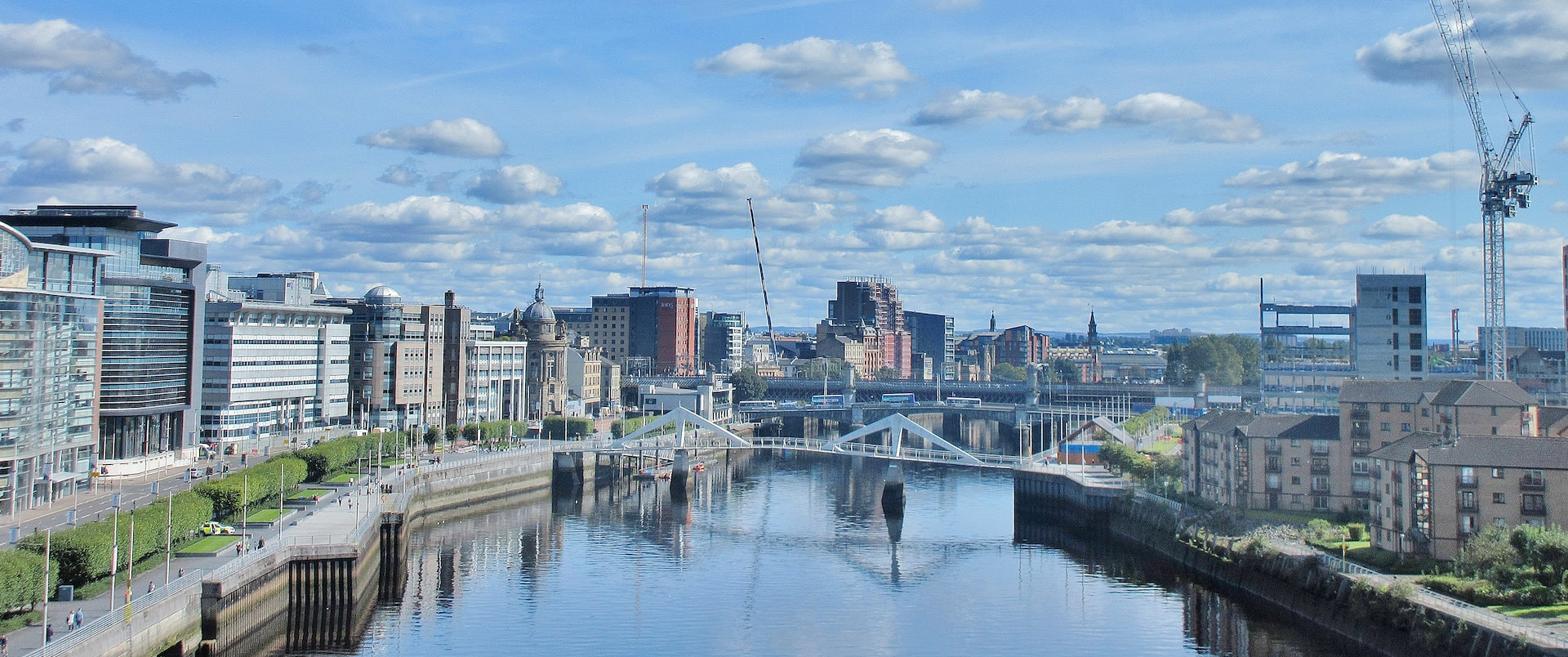Reflections on ‘A river runs through it’ report

Architecture and Design Scotland is delighted to have contributed to the “A river runs through it” report collated recently by Glasgow City Urbanist, Prof. Brian Evans. The report followed a design sprint with a group of stakeholders, designers, students and public sector professionals to look at the potential of the River Clyde.
Setting the scene
The Clyde and its tributaries run through the eight local authorities of the Glasgow City Region. Together, they have a population of just under 2 million (1.87m) making up nearly 40% (37%) of Scotland’s population.
The river system crosses through every settlement throughout the city region, providing a continuous blue network for the region’s communities.
There have been several initiatives for the Clyde, but never a single piece of visioning work that aims to consider the future of the river as a rural and urban ecosystem, from its source to the sea. The type of work that relates to settlement patterns and the transportation networks within the post-industrial metropolitan area of the Glasgow city region, as well as the network of vacant, derelict, and stranded assets.
The aim of the design sprint
In September 2021, a group of over sixty stakeholders, designers, students and public sector professionals collaborated on a two-day design sprint (charrette), hosted by Urban C:Lab (Buro Happold), Glasgow City Urbanist (Brian Evans) Glasgow Urban Lab (Glasgow School of Art), Architecture and Design Scotland, and Glasgow City Council.
The collective aim was to explore and reimagine the future of the Clyde Valley and the Glasgow City Region. Over the two days, the following themes and issues emerged:
A systemic river
What if the Clyde and its tributaries were managed as a whole?
Administrative boundaries don’t reflect complex systems like rivers.
Viewed and managed holistically, the Clyde and its tributaries can make an enormous contribution to the Glasgow City Region - providing a dense network of corridors, simultaneously addressing water resources and flooding, ecology, open space and health, mobility and economic opportunity, inclusion and community integration.
To deliver the most benefit, efficiently, its whole risk and potential need to be recognised and managed as a system.
A river, a place
What if we understood the Clyde as a place – not just a risk or a resource?
Managing the river Clyde as a water resource and a potential flood risk are essential tasks. However, it should not be the only perspective that we have on the role of the river.
Most people in Glasgow and the surrounding area live very close to the Clyde or one of its tributaries:
- What if we could bring back the river/water courses and their floodable spaces as essential parts of Glasgow place-making?
- What if we could make this the dominant image of the city?
- What if these places could provide a core source of value for communities and city economy?
A murmuration of small projects
What if we embarked on a programme of small projects rather than looking for mega projects?
Large-scale single projects are vulnerable to disruption and budgets are hard to secure. Further without a clear unifying vision, bottom-up community-led projects can be incoherent at the scale of the city and not lead to change in outcomes.
An alternative approach would be to set up a programme—a murmuration of small projects—aligned in terms of content but shaped in detail and led and funded by different bodies. This could:
- encompass the development of place/community projects at the river margin which improves flood resilience and ecosystem management while creating pedestrian/cycle routes, green spaces and development sites
- be a resource for local communities, create longer distance networks for city residents and visitors across the city region, provide a setting and add value for new housing and developments
A river collective
What if all the organisations involved with Clyde were to come together with one voice?
Sharing knowledge and coming together to make decisions is critical to successfully driving resilience.
Could a multi-agency group come together? It might have three tasks such as:
- setting a Clyde manifesto
- launching a support programme
- establishing some city region network-wide projects
End of the beginning
This report only marks the start of a new systems-scale conversation in collaborative place-making. It is clear that a Place Principle mindset and strategic visioning are required by public leaders, design practitioners, and local communities if its provocations can progress into new realities.
Header image credit: Photo by Adam Marikar on Unsplash
